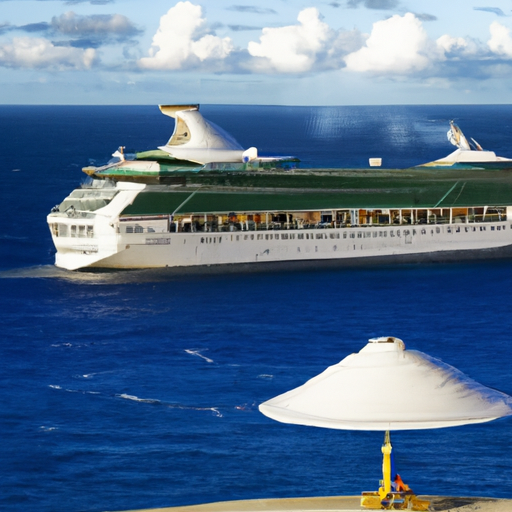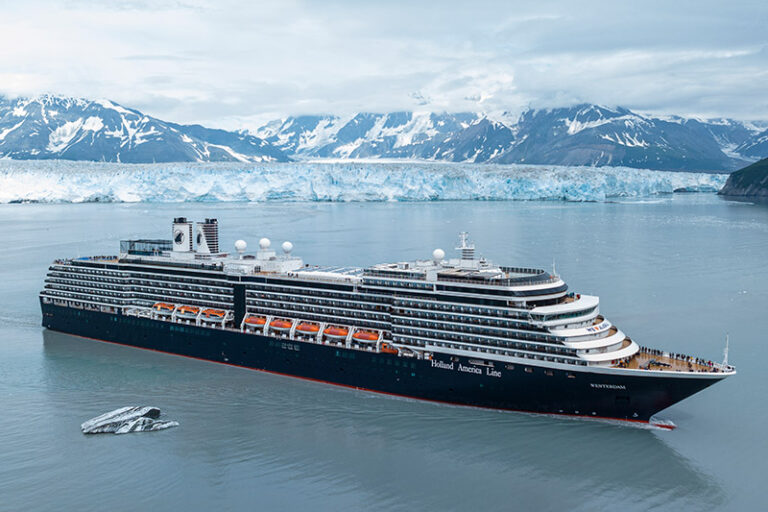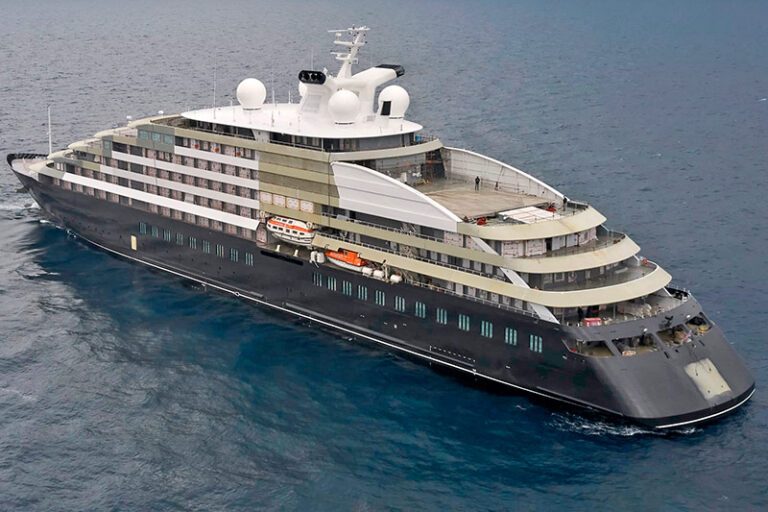The Truth About All-Inclusive Cruises – Are They Worth It?
If you’ve ever contemplated booking an all-inclusive cruise, you’ve probably wondered if it’s really worth it. Is the idea of indulging in unlimited food, drinks, and activities at sea too good to be true? In this article, we’ll uncover the truth behind all-inclusive cruises and whether they truly live up to the hype. From the hidden costs to the benefits, we’ll give you an honest evaluation so you can decide if this type of vacation is worth your hard-earned money. So sit back, relax, and let’s navigate through the sea of information to discover the real deal about all-inclusive cruises.

Pros of All-Inclusive Cruises
Food and Beverages
One of the biggest draws of all-inclusive cruises is the abundance of food and beverages available onboard. With multiple dining options, ranging from buffet-style restaurants to specialty eateries, you’ll never go hungry on a cruise. Whether you crave international cuisine, gourmet dishes, or comfort food favorites, there is something to suit every palate. The best part? You don’t have to worry about the cost of each meal or beverage, as they are already included in the price of your cruise.
Activities and Entertainment
All-inclusive cruises are known for their extensive array of activities and entertainment options. From live shows and Broadway-style performances to casinos, water parks, and rock climbing walls, there is never a dull moment onboard. Whether you prefer to relax by the pool, participate in a cooking class, or hit the dance floor at a themed party, there is always something to keep you entertained. With so many options available, you can tailor your experience to suit your interests and make the most of your vacation.
Convenience and Ease
Another advantage of all-inclusive cruises is the convenience and ease they offer. Once you step aboard the ship, everything is taken care of for you. Your meals, accommodations, and entertainment are all included, eliminating the need to constantly reach for your wallet. This simplicity allows you to fully unwind and enjoy your vacation without the worry of planning and coordinating every aspect of your trip. Additionally, with the majority of ports being accessible via the ship, you can explore multiple destinations without the hassle of packing and unpacking your belongings.
Cost-Saving Potential
While the initial price tag of an all-inclusive cruise may seem higher than a traditional cruise, the cost-saving potential can be significant. When you factor in the value of all the inclusions, such as meals, beverages, entertainment, and sometimes even gratuities, you may find that an all-inclusive cruise actually offers better value for your money. By paying upfront for most of your vacation expenses, you can better manage your budget and avoid unexpected costs throughout your trip. Additionally, some all-inclusive cruises may offer promotions or discounts, further enhancing the cost-saving potential.
Cons of All-Inclusive Cruises
Limited Choices
While all-inclusive cruises offer a wide variety of dining options and activities, some may find that the choices can be limited compared to traditional cruises. The set menus and pre-planned itineraries may not cater to specific dietary preferences or personal preferences for entertainment. Although there are usually alternative options available, such as specialty restaurants or a la carte menus, these may come with additional fees, reducing the perceived value of the all-inclusive experience.
Hidden Costs
Despite the promise of all-inclusive pricing, it is important to be aware of potential hidden costs that can arise during your cruise. While the majority of expenses are included, there are certain items and services that may come with additional charges. These can include alcoholic beverages, premium dining experiences, spa treatments, and excursions at port. It is essential to carefully review the fine print and terms of your all-inclusive package to avoid any surprises and ensure you are aware of what is included and what may require an extra fee.
Crowded Spaces
All-inclusive cruises can sometimes suffer from overcrowding, especially during peak travel seasons or on popular itineraries. With a large number of passengers onboard, popular areas such as pool decks, dining venues, and entertainment venues can become crowded, making it harder to find a quiet spot or access your preferred activities. It is important to consider your preferences for a more intimate or spacious experience when choosing an all-inclusive cruise, as larger ships may offer more amenities but also attract more guests.
Lack of Authenticity
One potential downside of all-inclusive cruises is the lack of authenticity in experiencing the destinations you visit. While you have the opportunity to explore different ports of call, it is important to keep in mind that the time spent ashore is often limited. With pre-arranged shore excursions and time constraints, it can be challenging to immerse yourself fully in the local culture and truly experience the authenticity of each destination. If you prioritize immersive experiences and cultural exploration, a traditional cruise may offer more flexibility and opportunities to connect with the local communities.
Choosing the Right All-Inclusive Cruise
Destination and Itinerary
When selecting an all-inclusive cruise, one of the most crucial factors to consider is the destination and itinerary. Determine which regions or countries you are most interested in exploring and research which cruise lines offer itineraries that align with your preferences. Consider the length of the cruise, the number of port stops, and the specific activities or landmarks you would like to experience. Whether you prefer tropical paradise, historical cities, or remote wilderness, there is an all-inclusive cruise to suit your interests.
Cruise Line Reputation
The reputation and credibility of the cruise line should play a significant role in your decision-making process. Read reviews and gather information about the cruise line’s track record for customer service, onboard experience, and safety standards. Look for certifications and awards that reflect the cruise line’s commitment to quality and guest satisfaction. Additionally, consider the target demographic or theme of the cruise line, as this can influence the overall atmosphere and onboard activities.
Ship Amenities and Facilities
The amenities and facilities offered onboard the ship should align with your preferences and interests. Consider the type and variety of dining options, the quality of the accommodation, and the range of onboard activities and entertainment. If you are seeking a more luxurious experience, look for ships with upscale features such as spas, specialty restaurants, or exclusive lounges. On the other hand, if you prioritize family-friendly activities, choose a ship with water slides, kids’ clubs, and interactive shows.
Fine Print and Terms
Before booking your all-inclusive cruise, carefully review the fine print and terms of the package. Pay close attention to what is included in the price and what may require additional fees or charges. Understand the cancellation and refund policies, the rules regarding onboard spending, and any limitations or restrictions that may apply. Taking the time to thoroughly understand the details of the all-inclusive package will help you avoid any surprises or disappointments during your cruise.
Comparing All-Inclusive and Traditional Cruises
Pricing Structure
One of the most significant differences between all-inclusive cruises and traditional cruises is the pricing structure. All-inclusive cruises typically have a higher upfront cost, as the price includes many of the onboard expenses. Traditional cruises, on the other hand, often have a lower base fare but require additional spending for meals, beverages, and select activities. When comparing prices, it is essential to consider your personal spending habits and preferences to determine which pricing structure offers better value for your budget.
Inclusions and Exclusions
The level of inclusions and exclusions is another critical factor to compare when considering all-inclusive and traditional cruises. All-inclusive cruises generally include meals, non-alcoholic beverages, entertainment, and sometimes even gratuities in the upfront price. Traditional cruises may only include accommodations, basic meals, and access to onboard amenities, with additional fees for other services. Evaluate your preferences for inclusive versus à la carte experiences to determine which option aligns better with your desired vacation style.
Level of Luxury
The level of luxury and overall experience can vary between all-inclusive and traditional cruises. All-inclusive cruises, particularly those marketed as luxury or premium, may offer a higher level of service, upscale amenities, and more refined dining options. Traditional cruises, while still providing a comfortable and enjoyable experience, may not have the same level of opulence or exclusivity. Consider your personal preferences for luxury and the value you place on upgraded experiences when making a decision.
Experience and Atmosphere
The overall experience and atmosphere also differ between all-inclusive and traditional cruises. All-inclusive cruises may have a more relaxed and laid-back atmosphere, appealing to those who wish to unwind and escape from the hustle and bustle of daily life. Traditional cruises often cater to a broader range of passengers, with a mix of families, couples, and solo travelers, creating a more dynamic and diverse onboard environment. Think about the kind of ambiance you prefer and the type of fellow passengers you would like to interact with when choosing between the two cruise options.

Managing Your All-Inclusive Cruise Budget
Researching and Comparing Prices
To effectively manage your all-inclusive cruise budget, start by researching and comparing prices from various cruise lines and travel agencies. Look for promotions, discounts, or package deals that can help offset the cost of your cruise. Keep in mind that the lowest price may not always offer the best value, so consider the inclusions and overall experience when evaluating different pricing options.
Understanding the Inclusions and Exclusions
Once you have selected an all-inclusive cruise, take the time to familiarize yourself with the inclusions and exclusions of your package. Understand what is covered in the upfront price and what may require additional fees. This will allow you to budget accordingly and avoid any unexpected expenses during your cruise. It is particularly important to pay attention to items such as alcoholic beverages, specialty dining, gratuities, and shore excursions, as these are common areas where additional charges may apply.
Setting a Budget and Prioritizing Expenses
Before embarking on your all-inclusive cruise, set a budget and determine how much you are willing to spend on various aspects of your vacation. Take into consideration any additional expenses that may not be included in your package, such as souvenirs or spa treatments. Prioritize your spending based on what is most important to you, whether it be trying different specialty restaurants, booking exciting excursions, or indulging in spa treatments. This will help you make informed decisions and ensure you get the most out of your budget.
Avoiding Unexpected Expenses
To avoid unexpected expenses during your all-inclusive cruise, it is essential to plan ahead and stay informed. Take advantage of pre-cruise planning resources provided by the cruise line, such as online portals or guest services, to understand what is included and what may require additional charges. Additionally, read reviews or seek advice from experienced cruisers to gain insights into potential hidden costs or money-saving tips. By being proactive and well-informed, you can minimize the risk of encountering unexpected expenses that can impact your budget.
Tips for Getting the Most Out of Your All-Inclusive Cruise
Researching and Planning Ahead
One of the best ways to get the most out of your all-inclusive cruise is to research and plan ahead. Familiarize yourself with the ship’s amenities, onboard activities, and dining options before your trip. Take note of any reservation requirements or booking windows for popular activities or specialty restaurants. By having a well-thought-out plan, you can make the most of your time onboard and ensure you don’t miss out on any experiences that interest you.
Exploring Onshore Excursions
While all-inclusive cruises offer a variety of onboard activities, it is important not to overlook the opportunities for exploration and adventure during your port stops. Research the available shore excursions and choose ones that align with your interests and preferences. Whether it’s snorkeling in crystal-clear waters, visiting historical landmarks, or experiencing local culture, participating in well-planned excursions can add depth and excitement to your cruise experience.
Taking Advantage of Onboard Activities
All-inclusive cruises are known for their extensive lineup of onboard activities, so be sure to take full advantage of what is offered. Whether it’s attending a live show, participating in a fitness class, or lounging by the pool, make a point to try new things and engage in activities that spark your interest. With such a diverse range of options available, there is something for everyone, regardless of age or personal preferences.
Trying New Experiences
An all-inclusive cruise is the perfect opportunity to step out of your comfort zone and try new experiences. Whether it’s a cooking demonstration, a dance class, or a wine tasting, embrace the chance to learn something new or discover a hidden talent. Engaging in new experiences will not only enhance your cruise vacation but also create lasting memories.

Real-Life Experiences on All-Inclusive Cruises
Customer Reviews and Ratings
Customer reviews and ratings can provide valuable insights into the experiences of other travelers on all-inclusive cruises. Read reviews from reputable sources to gauge overall customer satisfaction, as well as individual feedback on specific aspects of the cruise, such as service, food quality, and entertainment. Pay attention to both positive and negative reviews to get a balanced perspective and make an informed decision.
Personal Experiences and Perspectives
Personal experiences and perspectives from friends, family, or fellow travelers can also offer valuable insights into what to expect on an all-inclusive cruise. Talk to people who have previously taken similar cruises and ask about their highlights, challenges, and overall impressions. By hearing firsthand accounts, you can gain a deeper understanding of what the experience is truly like and tailor your expectations accordingly.
Gaining Insights from Other Travelers
Online forums, travel blogs, and social media platforms dedicated to cruising can be excellent sources of information and firsthand experiences. Joining these communities allows you to connect with experienced cruisers, ask questions, and gain insights from those who have already been on all-inclusive cruises. These resources can provide insider tips, offer advice on maximizing your experience, and shed light on any potential issues to be mindful of.
Finding Trustworthy Sources
When seeking real-life experiences on all-inclusive cruises, it is important to rely on trustworthy sources. Look for reputable travel publications, established travel bloggers, and websites with a proven track record for providing reliable and unbiased information. While user-generated reviews and opinions can be valuable, be discerning and consider the credibility and intent behind the source.
The Future of All-Inclusive Cruises
Emerging Trends and Innovations
The future of all-inclusive cruises is expected to be marked by emerging trends and innovations. Cruise lines are continuously evolving to meet the changing preferences and demands of travelers, introducing new technologies, amenities, and experiences. Expect to see advancements such as smart cabins with voice-activated controls, virtual reality entertainment options, and sustainable practices becoming more prevalent in the cruise industry.
Sustainability and Environmental Considerations
As the focus on sustainability and environmental responsibility grows, all-inclusive cruises are also embracing greener practices. Cruise lines are investing in cleaner energy solutions, implementing waste management systems, and partnering with local communities to protect fragile ecosystems. In the future, there will likely be an increased emphasis on eco-friendly initiatives and responsible tourism practices within the all-inclusive cruise industry.
Impact of COVID-19 Pandemic
The COVID-19 pandemic has significantly impacted the cruise industry, including all-inclusive cruises. Cruise lines have implemented extensive health and safety protocols to protect passengers and crew members, including enhanced cleaning procedures, social distancing measures, and mandatory testing. As the world continues to navigate the pandemic, it is expected that these measures will remain in place, ensuring the safety of all passengers and shaping the future of all-inclusive cruising.
Market Demand and Consumer Preferences
The future of all-inclusive cruises will be influenced by market demand and consumer preferences. As more travelers embrace the convenience and value of all-inclusive experiences, cruise lines are likely to expand their offerings and cater to a wider range of interests. This may include more specialized itineraries, immersive cultural experiences, and personalized services to meet the evolving demands of discerning travelers.

Conclusion
All-inclusive cruises offer a range of advantages, including the abundance of food and beverages, diverse activities and entertainment options, convenience and ease, and potential cost savings. However, it is essential to consider the limitations such as limited choices, potential hidden costs, crowded spaces, and the lack of authenticity. When choosing the right all-inclusive cruise, factors such as destination and itinerary, cruise line reputation, ship amenities and facilities, and the fine print and terms should be considered. Comparing all-inclusive and traditional cruises based on pricing structure, inclusions and exclusions, level of luxury, and overall experience is vital. Managing your all-inclusive cruise budget requires researching and comparing prices, understanding the inclusions and exclusions, setting a budget, and avoiding unexpected expenses. To get the most out of your all-inclusive cruise, researching and planning ahead, exploring onshore excursions, taking advantage of onboard activities, and trying new experiences are key. Real-life experiences from customer reviews and ratings, personal perspectives, insights from other travelers, and trustworthy sources can help inform your decision-making process. The future of all-inclusive cruises will be shaped by emerging trends and innovations, sustainability and environmental considerations, the impact of the COVID-19 pandemic, and market demand and consumer preferences. As you weigh the pros and cons and consider the various factors, you can make an informed decision about whether an all-inclusive cruise is worth it for you.






